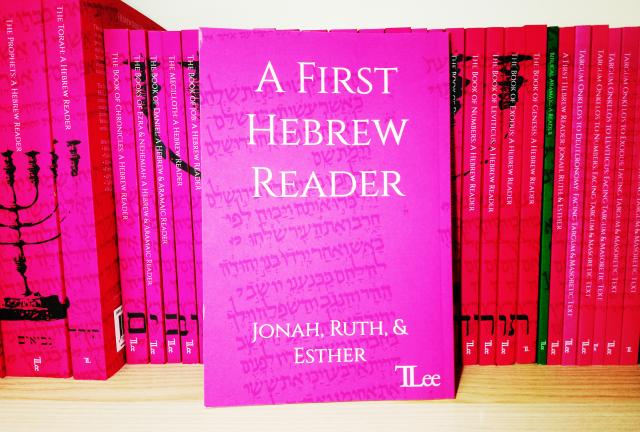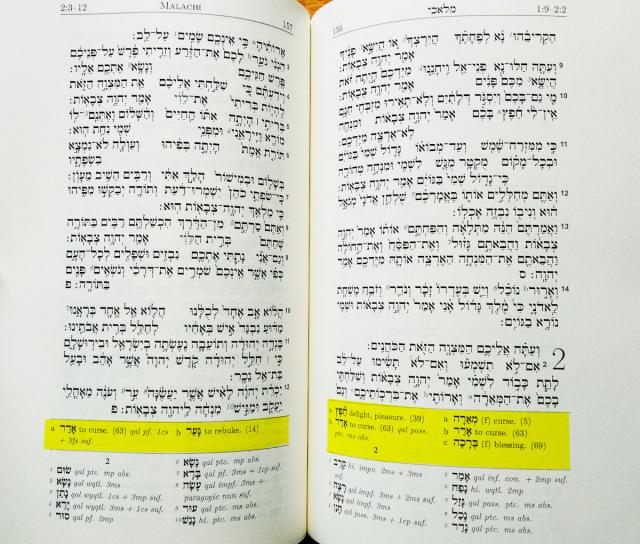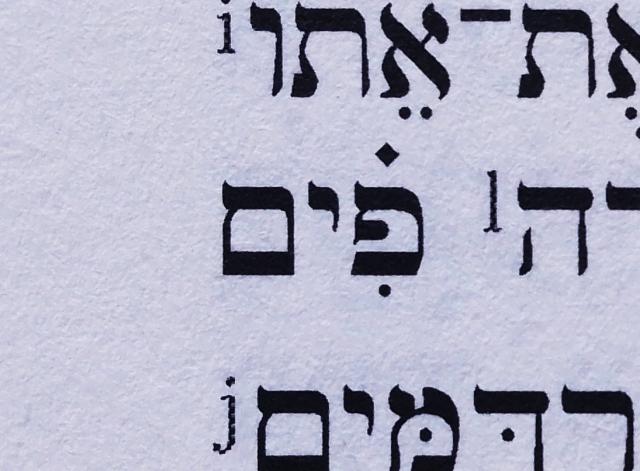
We have just published our first books in a new series of Latin Patristic Readers! These are fully macronized, have all the rare words glossed, and difficult forms parsed. In addition, we supply copious paradigm tables, a glossary, and maps in Latin. We hope this resource will be a huge help to anyone learning Latin and wanting to read the Church Fathers. For more info and samples visit https://timothyalee.com/augustine
Available:
And check out the giveaway competition!
Augustine’s Confessions, Latin Readers with Macrons – just out!
— Timothy (Tim) Lee (@Timothy_A_Lee) September 1, 2025
❤️Like & 🔁Repost to 🏆 win a copy!*https://t.co/miGXXyBOdo
New Series: Latin Patristic Readers – helps to read the Church Fathers!
𝑡𝑜𝑙𝑙𝑒 𝑙𝑒𝑔𝑒!
Epic trip in Italy to his tomb & sites, see below! (1/7) pic.twitter.com/nwXvMuO9ac

Almost 3,000 books have been shipped and two of them have now hit two hundred sales. These are my First Hebrew Reader (218 sales) and my Psalms reader: 212 sold, including 26 large print, 16 pocket sized! My first Septuagint reader has fallen behind with only 130 sold! All across the world people have been reading this book, from the United States, Canada, UK, Germany, France, Spain, Sweden, Norway, the Netherlands, Australia, even Japan! People are using it to read Jonah, Ruth, and Esther in Hebrew, the first books that I read cover-to-cover in Hebrew. I hope it is helping many of you learn Hebrew, revise your Hebrew, and develop an enjoyment in reading Hebrew!
Nothing better than sitting in a cafe a reading the book of Jonah from one of @Timothy_A_Lee Hebrew readers! pic.twitter.com/akyfkkPE4A
— Chris Metcalf (@Chr1sMetcalf) January 18, 2024
This Hebrew reader by @Timothy_A_Lee is full on Hebraic. The whole book is right to left. pic.twitter.com/xHIzR6uKtC
— Matt Ferris (@ferrismattic) November 1, 2023
I'm too late for the contest @Timothy_A_Lee @TimothyALeePub but here is a photo I took of my readers this last night of #Chanukka #BibleReader pic.twitter.com/C3KokeEMGO
— Eric Lake💙🇮🇱 (@etank) December 15, 2023
This is a Hebrew reader for the books of Jonah, Ruth, and Esther. The books selected for this reader contain some of the simplest passages of the Hebrew Bible, as such they are often among the first books to be read and studied by students. It is designed as a useful cost-efficient tool for two groups of people. First, for students learning Biblical Hebrew after a year’s worth of study this book and provides the material to grow in reading ability from the primary texts. Second, this book is designed for pastors, rabbis, scholars, and curious lay people looking to refresh their Hebrew, or use them in preparation for their work of study, preaching, and teaching.
The book immerses the reader in the biblical texts in order to build confidence reading Biblical Hebrew as quickly as possible. To achieve this, all uncommon words that occur 80 times or fewer in the Bible are glossed as footnotes. This enables the reader to continue reading every passage unhindered. Therefore, the book complements traditional language grammars and is especially ideal for beginner and intermediate students learning to read Biblical Hebrew. However, even advanced readers will appreciate the glossing of the rare words, since it saves time reading the text. In addition, unlike other readers, this book is small and light, so very easy to carry around and a pleasure to read.
Other features include:

We have just produced a series of Latin Vulgate Readers! These are fully macronized, have all the rare words glossed, and difficult forms parsed. In addition, we supply copious paradigm tables, a glossary, and maps in Latin. We hope this resource will be a huge help to anyone learning Latin and wanting to read the Vulgate. For more info and samples visit https://timothyalee.com/latin
And check out the giveaway competition!
The book you’ve heard of but never read! Unique Latin Readers, macronized with glosses are just out!
— Timothy (Tim) Lee (@Timothy_A_Lee) June 18, 2025
• To win one of these books from @TimothyALeePub / https://t.co/BYzq6Uwn9N: Quote post this with Hashtag #LatinReaders
• 5 winners will receive a book—T&C below
Tolle Lege! pic.twitter.com/QkYTSWT098

Ya están disponibles los primeros lectores del hebreo bíblico:
Ambos libros son una excelente herramienta para estudiantes que, teniendo solo un vocabulario básico del hebreo bíblico, quieren que su lectura se solidifique y de ahí pasar a textos más complejos.




It was interesting and extremely valuable to see an advert in issue 214 (2 April this year) of Cenn@d about ‘Efengyl Ioan: Llyfr Dallen Groeg, Timothy A. Lee; Welsh edition by Gwilym Tudur’. Timothy A. Lee is a doctoral student at Cambridge who has created similar volumes for all the books of the Testament New along with a number of Old Testament books also… This is a great achievement, and he publishes it all himself.
Based on my examination of his edition of the Greek text of the Gospel of John, I can approve Holmes's edition of the Greek New Testament of the Society of Biblical Literature (SBLGNT). It is an edition that is ideal modern for readers, and, as I did, it can be downloaded for free on a home computer as the American Bible Society has make that legally possible. Although I have not yet had the opportunity to see Gwilym Tudur's translation of the book on John's Gospel, I can approve the Greek text that is the basis of his efforts to attract anyone who is keen to improve their grasp of New Testament Greek.

I’ve corrected an issue in Malachi chapters 1-2. Huge thank you to J. David Pleins, Professor Emeritus, Santa Clara University for spotting this mistake! Malachi only contains three chapters in the Hebrew Bible, but four in the Vulgate and English Bibles. An error mean that previously chapters one and two only glossed words also found in chapter three.
For those who already purchased a copy of the Twelve Prophets Reader, you may download and print this updated text.

I thank all my readers for feedback on my books. Recently I updated the footnotes in my Hebrew reader for 1–2 Samuel in order to correct several minor mistakes. Most were minor changes, or mistagged words. One of them, however, stood out as far more interesting.
וְֽהָיְתָ֞ה הַפְּצִ֣ירָה פִ֗ים לַמַּֽחֲרֵשֹׁת֙ וְלָ֣אֵתִ֔ים וְלִשְׁלֹ֥שׁ קִלְּשׁ֖וֹן וּלְהַקַּרְדֻּמִּ֑ים וּלְהַצִּ֖יב הַדָּרְבָֽן׃and the charge was two-thirds of a shekel for the ploughshares and for the mattocks, and a third of a shekel for sharpening the axes and for setting the goads. (1 Samuel 13.21)
The hapax פִּים (pîm) in 1 Sam. 13.21 is an interesting word. The classic Hebrew dictionary Brown-Driver-Briggs (BDB) records פִּים as a corrupt form of פֶּה (peh, mouth). Therefore, given פֶּה is a common word it was not previously glossed in the footnotes of my Hebrew reader. However, a more plausible explanation for פִּים was possible with the archaeological discovery of an ancient coin in 1907 (the year after the publication of BDB). On that coin are inscribed to letters פים which refers to a weight 2/3rds of a shekel.[1] It’s an example of the assistance that archaeology can bring to understand details within the scriptures.
I thank the Charlie Skrine for his feedback and observation that this gloss differed from English translations and other dictionaries. He has been working through and teaching 1 and 2 Samuel while using my readers.